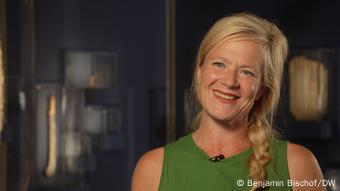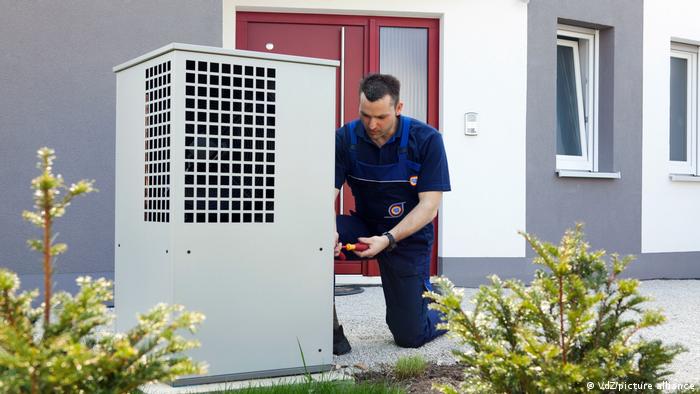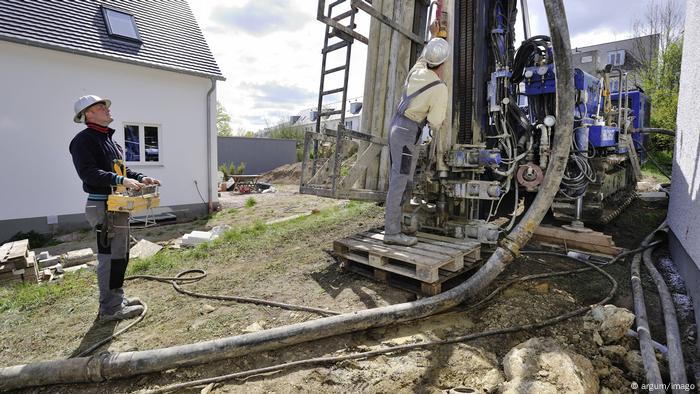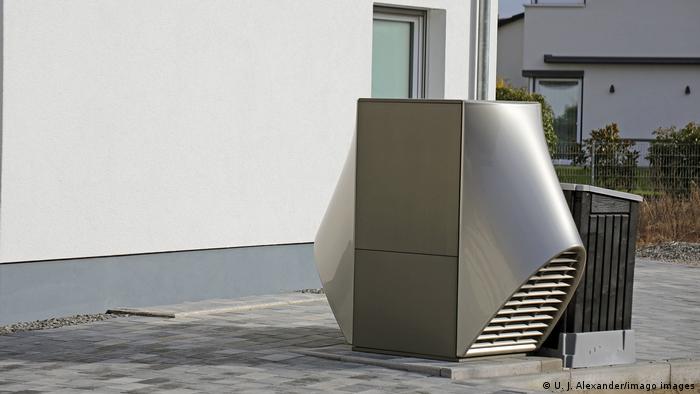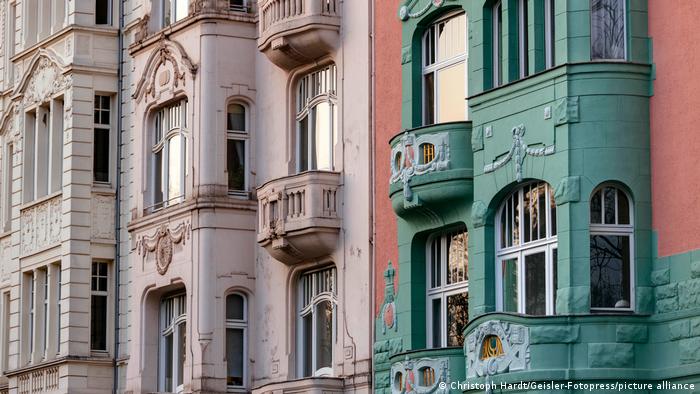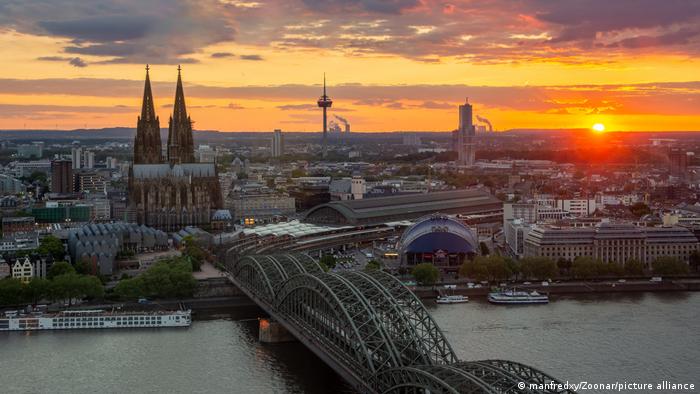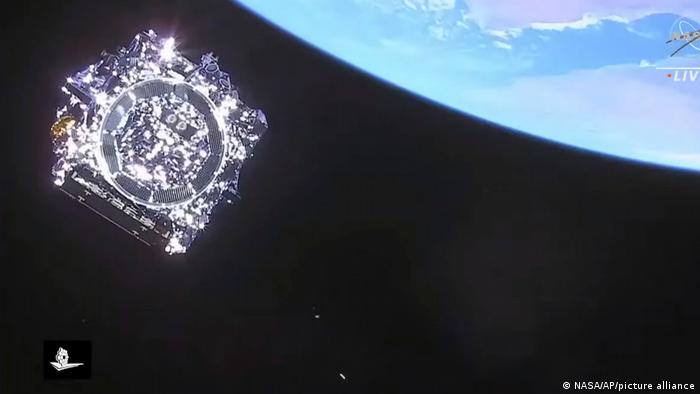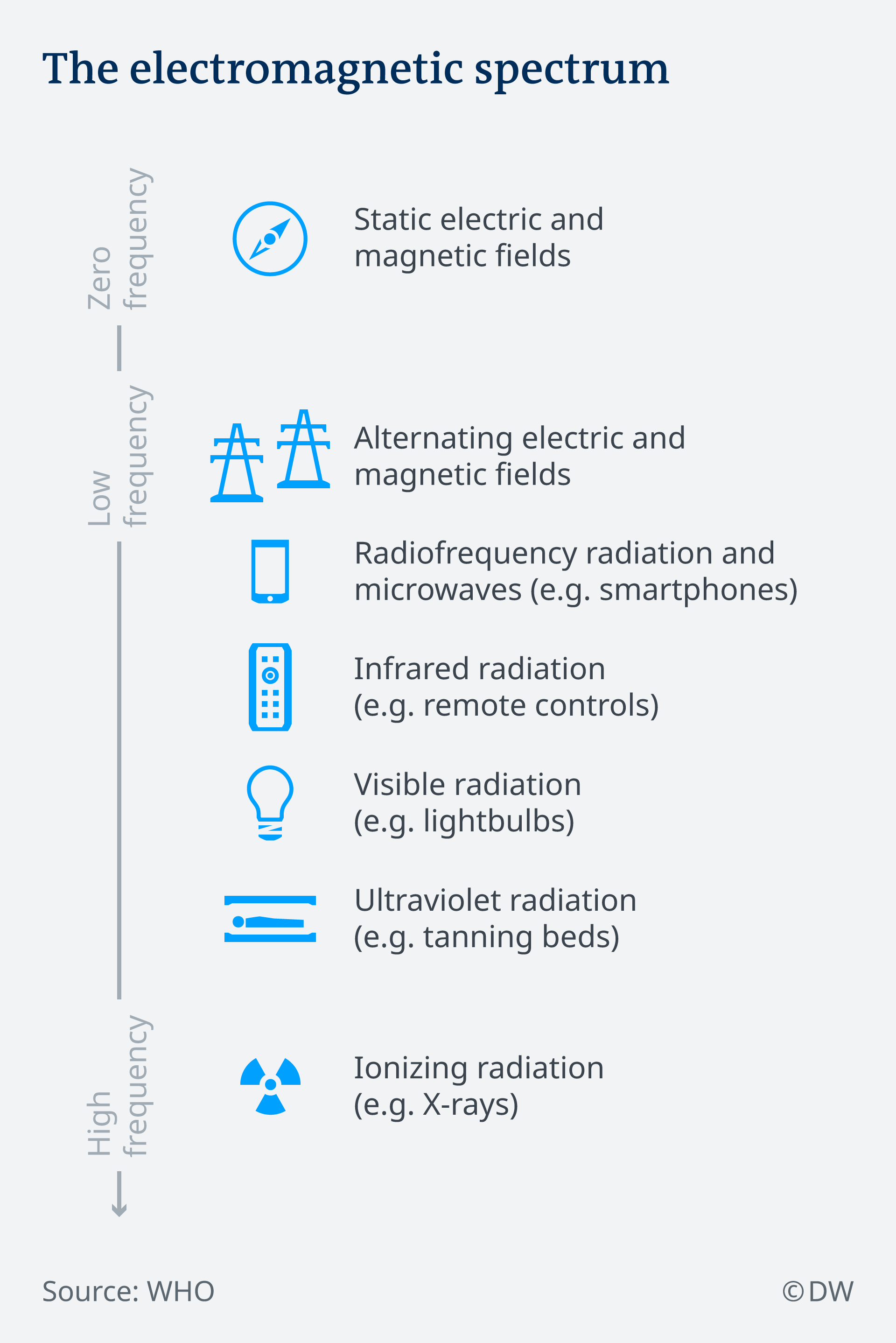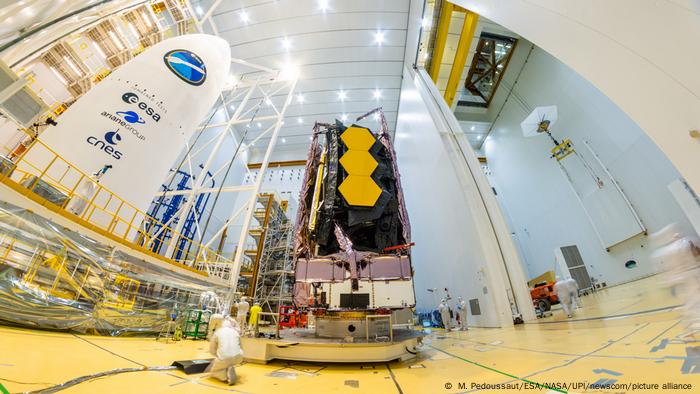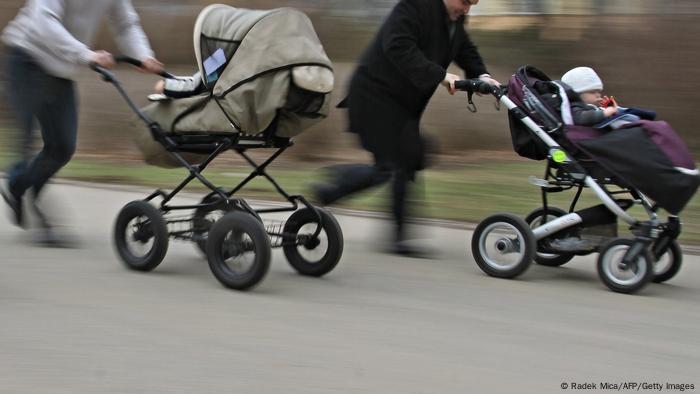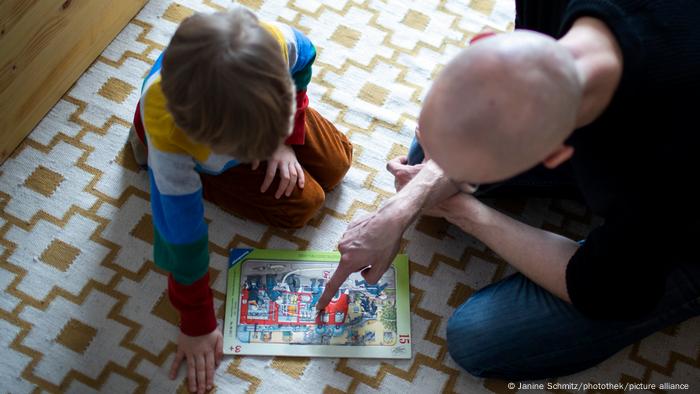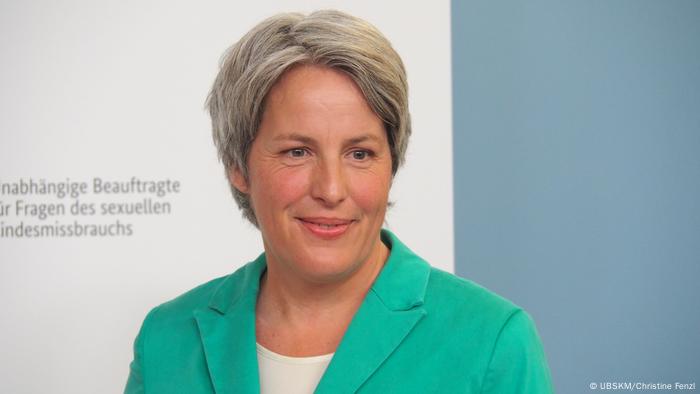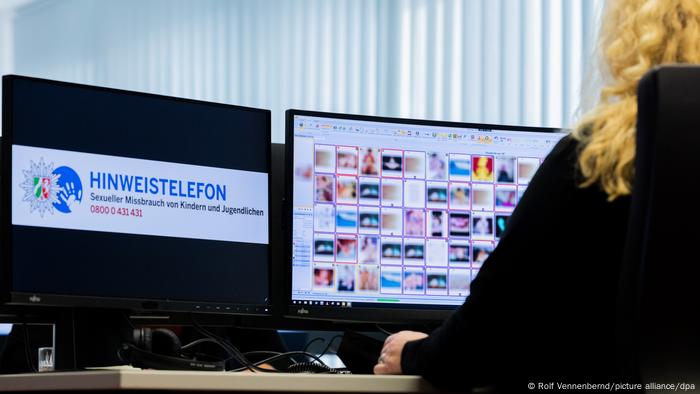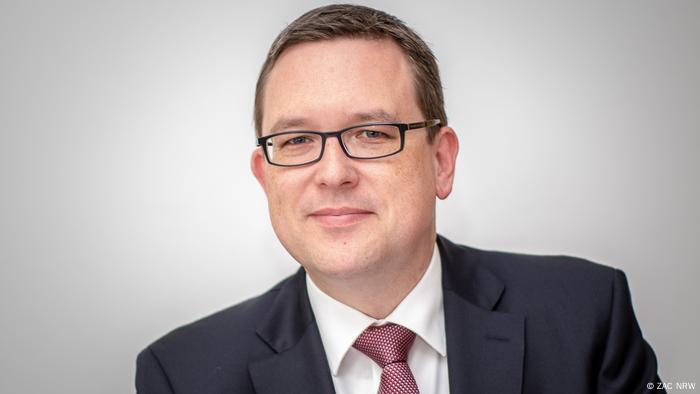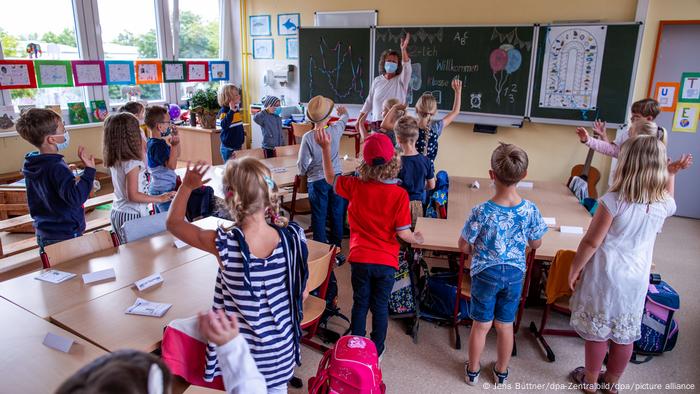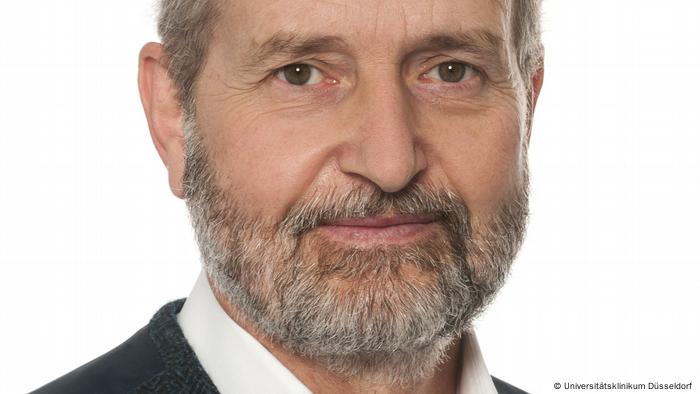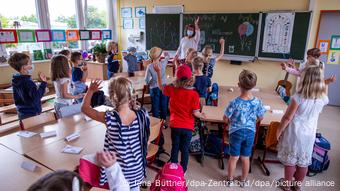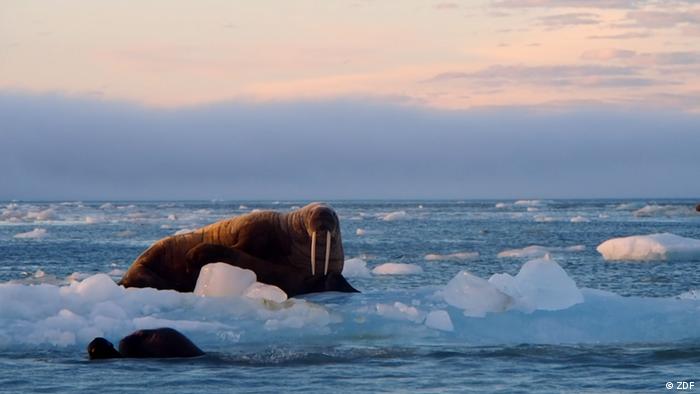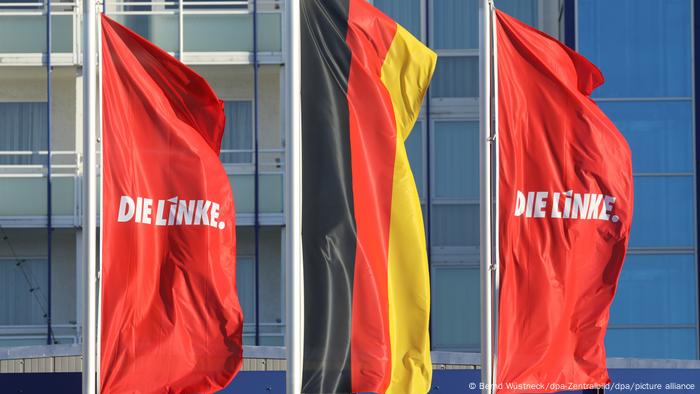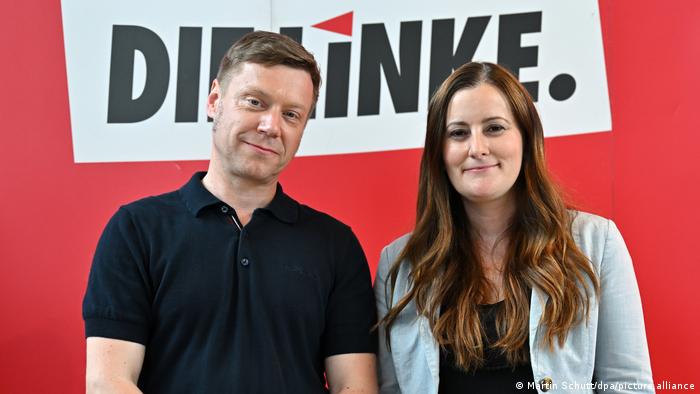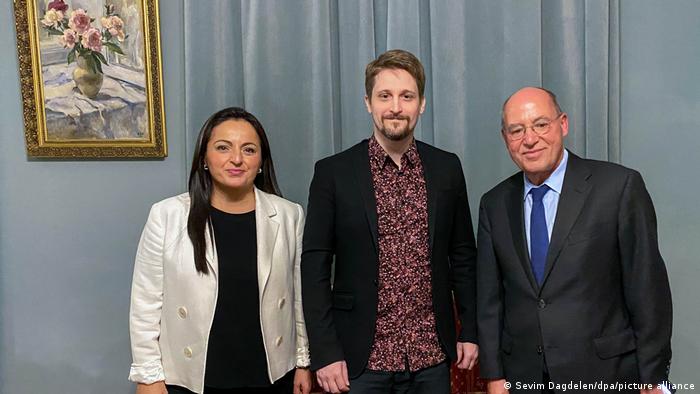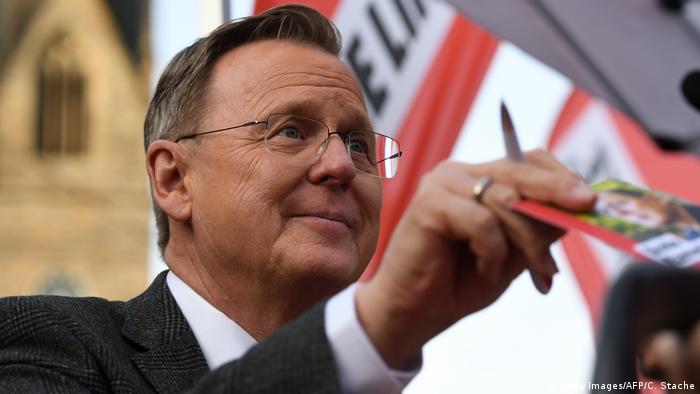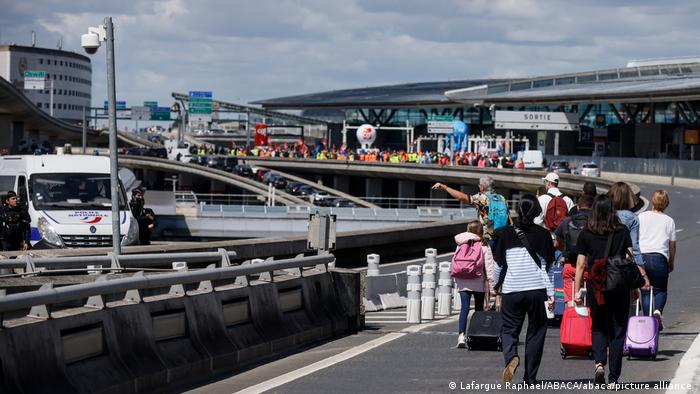Africa celebrates the return of Benin Bronzes, but questions remain
Across Africa, many are excited about Germany’s decision to return more than 1,000 Benin Bronzes to Nigeria. But there are calls for monetary compensation, too.
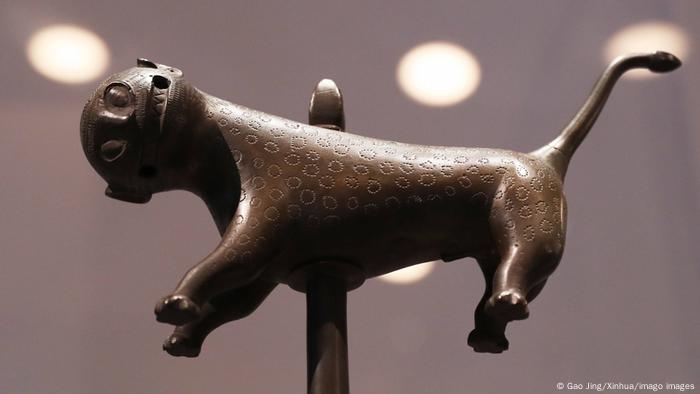
Artifact displayed in French museums, like this one, are also set to go back to Nigeria.
"This is perhaps the most significant agreement signed by a European nation with Nigeria with regards to cultural diplomacy," Yusuf Tuggar, Nigerian Ambassador to Germany, told DW after the agreement to return more than 1,000 Benin Bronze artifacts was signed on Friday. "It is a very significant achievement, a very significant milestone and we hope that it will lead to the return of not just the Benin Bronzes, but other stolen cultural properties from other countries as well."
In all, German museums hold more than 1,130 of the artifacts. They're spread across the Linden Museum in Stuttgart, the Berlin Humboldt Forum, the Cologne Rautenstrauch-Joest Museum, the Hamburg Museum for World Cultures and the State Ethnographic Collections of Saxony.
The importance of the decision to return the Benin Bronzes is underscored by the leader of the Bana people in Cameroon, Fon Sikam Happi V.
"It's a very good thing. This will allow Africa to come to terms with its past and reclaim these objects that would never have left Africa" if colonizers hadn't taken them, Fon Happi told DW.
The valuable artifacts were stolen from the former Kingdom of Benin by the British when they sacked Benin City in 1897. The royal palace was razed to the ground, and Benin City, in what is now the southern Nigerian state of Edo, was almost destroyed.
For many residents of Edo the news of the return couldn't have come at a better time.
"We are really happy about the news of the return of the Benin artifacts," Friday Osaro told DW. "Our heritage and assets that were stolen years back are being returned to the rightful owner, Benin Kingdom. We are really happy."
Lancelot Imansuen, a restitution activist, believes this decision will inspire creatives. "As an artist, as an Edo man, as a creative, I feel very elated by this move by the German government to return these artworks," he told DW.
Across Nigeria, many see this as an opportunity to learn their history.
"This is like physical history for us. Everyone today can see this and know that our people had history and they were civilized to an extent because all these artifacts are not toys, they tell a story", Samuel Marv, a history graduate and user interface designer, said in an interview with DW.
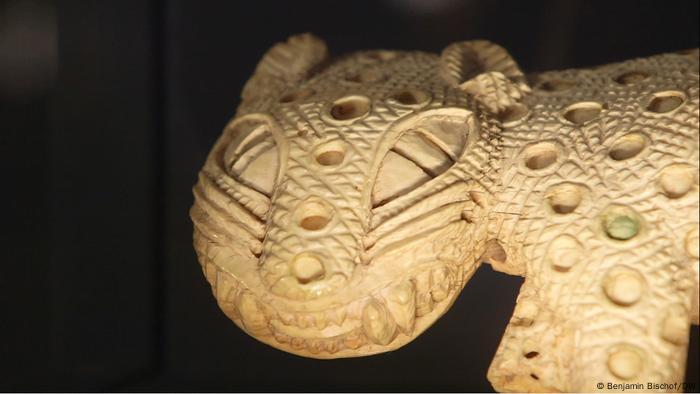
Pieces like this lion displayed in Cologne are among the artifacts set to be returned to Nigeria
For some, repatriation is not enough
Although there is excitement about the return of cultural artifacts to Africa, there are still questions surrounding the payment of compensation.
"Beyond the restitution of objects that have been stolen and exhibited in European museums, compensation must be paid. This would help Africa build proper museums to house these artifacts", Fon Happi added.
Ify James, an independent contractor, told DW, "I think that the return of the Benin Bronzes should come with huge compensation, because it made them tons of money while they had them."
The agitation is particularly strong on Facebook. Justin Curtis, a user from Liberia, commented on a DW Africa video about the bronzes that "the healing process should be extended further to paying for what was done to Africa. This is a new way of seeing Africans as partners to a global solution to the many challenges we all face as a people".
Harry Koffi, another user on DW Africa's Facebook page added: "They must also return all monies they accrued from the museums that housed these artifacts."
And while it is unlikely that Germany will pay any monetary compensation, German Foreign Minister Annalena Baerbock said during the official official ceremony on Friday that the country is "assisting Nigeria in establishing a new museum in Benin City, which will also display Benin Bronzes in the future."
Benin Bronzes open up the conversation on African art
Other African countries are taking a cue from Friday's event, demanding that other artifacts be returned too. Togo, which was a German colony until 1914, says it will soon make a formal request for its art to be returned.
"There are teacher-researchers who are in German galleries and museums, identifying cultural property from Togo," Kossi Gbenyo Lamadokou, Togo's Minister of Culture and Tourism, told DW. "At the end of the identification of items in Germany and France, we will be able to say which of the items need to be repatriated."
Lamadokou explained that not all African art in European museums was illicitly taken, and that Togo is specifically targeting stolen art.
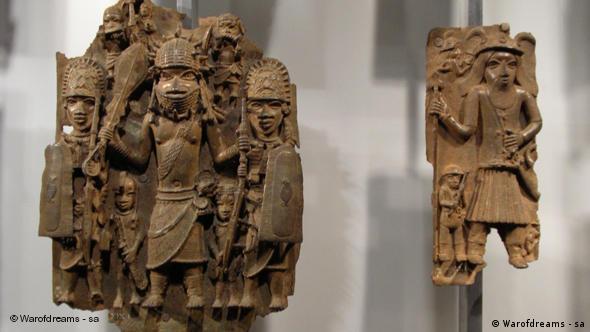
These Benin bronze artifacts and more than 1,000 others will soon return to their rightful home
In Tanzania, there is a growing debate over the return of the dinosaur ‘Brachiosaurus brancai' bones recovered by German paleontologists in 1909. The dinosaur bones were excavated from more than 100 sites in Tendaguru in southern Tanzania. Today, the dinosaur skeleton is the star exhibit at Berlin's natural history museum.
"The dinosaur fossil is important in matters of research in the area of archaeology and paleontology so if we are to receive it, we must also make sure that we have the human resources to retain it ― not only for the benefit of Tanzania, but also for the world", Tanzania's ambassador to Germany Abdallah Possy told DW.
Abdallah Possy explained that the East African nation has been in negotiations with Germany over the return of the dinosaur fossils.
Germany returns Benin Bronzes to Nigeria
After a century of restitution claims, Germany is transferring ownership of 1,130 bronzes to Nigeria. A groundbreaking step in the return of looted art.
"It's a historic moment for us, for our two countries, that we are now signing an agreement for the return of the Benin Bronzes," Abba Isa Tijani, director of Nigeria's National Commission for Museums and Monuments (NCMM), told DW ahead of the ceremony on Friday.
The Nigerian commission has played a key role in drafting the restitution agreement signed in Berlin on July 1 by Germany's Foreign Minister Annalena Baerbock, Commissioner for Culture and the Media Claudia Roth, Nigeria's Minister of Culture Lai Mohammed and Minister of State for Foreign Affairs Zubairo Dada. "I like to express my gratitude to the trailblazing German government as the first European country in history to ever enter into a formal agreement to return all properties of the colonial past to their rightful owners. You have set the standards of what reconciliation should look like. It is my hope that other European countries who still posess such artifacts of ours will enter into your footsteps", Dada said.
The contract officially transfers ownership of the Benin Bronzes held by German museum collections to Nigeria, with immediate effect. "This is the known single largest repatriation of artifacts anywhere in the world. The president, government and people of Nigeria and especially the Oba of Benin, Oba Ewuare II are very happy and grateful to the federal government of Germany for making it possible", said Lai Mohammed.
Five German museums involved in restitution
In all, there are more than 1,130 artifacts from the Linden Museum in Stuttgart, the Berlin Humboldt Forum, the Cologne Rautenstrauch-Joest Museum, the Hamburg Museum for World Cultures and the State Ethnographic Collections of Saxony.
The valuable artifacts — sculptures and reliefs made of bronze and brass, as well as works made of ivory, coral and wood — were stolen from the former Kingdom of Benin by the British in a brutal punitive expedition in 1897. The royal palace from pre-colonial times was razed to the ground, and Benin City, in what is now northern Nigeria, was almost completely destroyed.
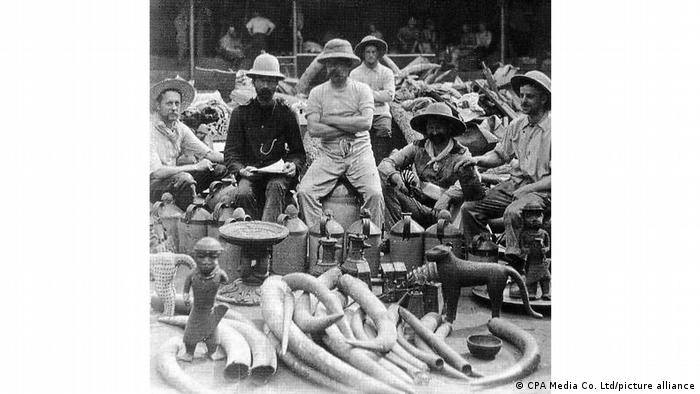
Admiral Sir Harry Rawson (center) led the punitive expedition
At the beginning of the 20th century, many of the stolen works of art were auctioned in London, with Germany securing the second-largest collection in the world.
The former Kingdom of Benin tried once to reclaim the bronzes 100 years ago — without success.
African intellectuals took up the fight again in the 1970s, but their demands fell on deaf ears in Europe.
It was French President Emmanuel Macron's visit to Burkina Faso in 2018 that marked a turning point: the French President announced that France would be returning its colonial art treasures and commissioned a report on how to achieve this.
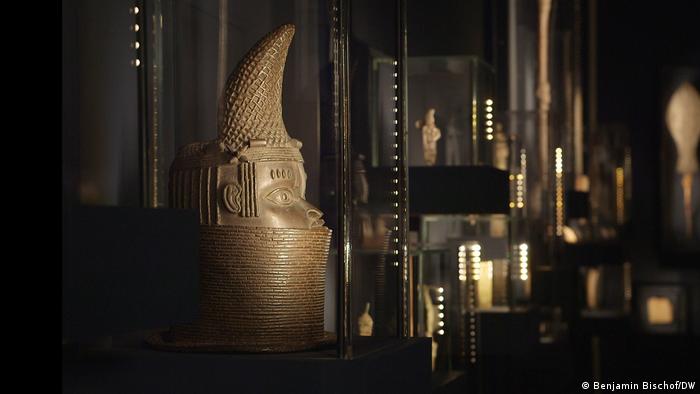
The queen heads, such as the one seen in this picture, are particularly impressive
The report made waves in Germany. For Nanette Snoep, the fact that Nigeria and Germany are now coming to an agreement after protracted negotiations means that "history is now really being written."
"If the return and transfer of ownership of the Benin Bronzes succeeds now, then that really is the beginning of the decolonization of the so-called ethnographic bronzes museums," Snoep, who is the head of the Rautenstrauch-Joest-Museum, told DW. "This transfer of ownership is incredibly important, almost more important than the physical return."
From now on, Nigeria will decide how to deal with these objects and also how to talk about them: "It's about returning history and it's about a new narration of history," she added.
In all, there are more than 1,130 artifacts from the Linden Museum in Stuttgart, the Berlin Humboldt Forum, the Cologne Rautenstrauch-Joest Museum, the Hamburg Museum for World Cultures and the State Ethnographic Collections of Saxony.
The valuable artifacts — sculptures and reliefs made of bronze and brass, as well as works made of ivory, coral and wood — were stolen from the former Kingdom of Benin by the British in a brutal punitive expedition in 1897. The royal palace from pre-colonial times was razed to the ground, and Benin City, in what is now northern Nigeria, was almost completely destroyed.

Admiral Sir Harry Rawson (center) led the punitive expedition
At the beginning of the 20th century, many of the stolen works of art were auctioned in London, with Germany securing the second-largest collection in the world.
The former Kingdom of Benin tried once to reclaim the bronzes 100 years ago — without success.
African intellectuals took up the fight again in the 1970s, but their demands fell on deaf ears in Europe.
It was French President Emmanuel Macron's visit to Burkina Faso in 2018 that marked a turning point: the French President announced that France would be returning its colonial art treasures and commissioned a report on how to achieve this.

The queen heads, such as the one seen in this picture, are particularly impressive
The report made waves in Germany. For Nanette Snoep, the fact that Nigeria and Germany are now coming to an agreement after protracted negotiations means that "history is now really being written."
"If the return and transfer of ownership of the Benin Bronzes succeeds now, then that really is the beginning of the decolonization of the so-called ethnographic bronzes museums," Snoep, who is the head of the Rautenstrauch-Joest-Museum, told DW. "This transfer of ownership is incredibly important, almost more important than the physical return."
From now on, Nigeria will decide how to deal with these objects and also how to talk about them: "It's about returning history and it's about a new narration of history," she added.
Icons of looted art
Every major museum in the Global North with collections from the Global South has at least one Benin Bronze: "These are the Warhols, these are the Rembrandts, the Dürers of the so-called ethnographic museums," said Snoep.
The fact that these "icons" of looted art are now being returned clears the way for "a new ethic in the field of international cooperation."
"It's about finally giving space to talk about colonial trauma, about broken or shattered memories."
However, a specific date for the "physical return" of the Benin Bronzes has not yet been set: "It won't happen overnight," said the director of Nigeria's National Commission of Museums and Monuments, Abba Isa Tijani. Transport, packaging, insurance, preservation and many other technical aspects have to be regulated first, he explained.
The bronzes are to be exhibited in various state institutions and museums, in galleries and in the rebuilt royal palace, which is to be inhabited by descendants of the once expelled king of Benin City.
The Edo Museum of West African Art (EMOWAA), originally planned for the Benin Bronzes, is still under construction, and it is unclear when it will be completed, explained Tijani.
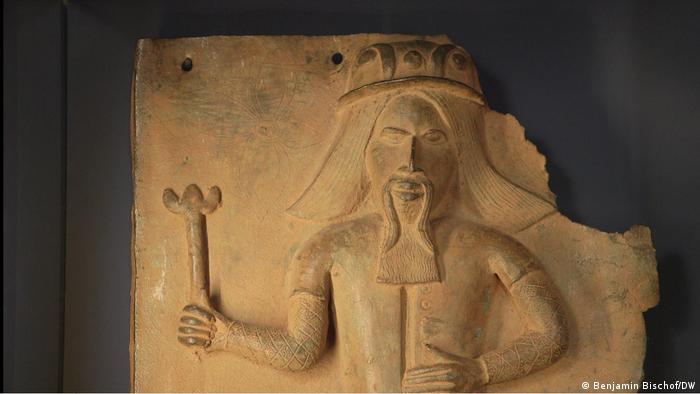
In the Kingdom of Benin, the king was traditionally called 'Oba'
In Nigeria and especially in Benin City, the anticipation couldn't be greater: "We are really happy with the return of Benin artifacts. It means a lot. Our heritage, our cultural assets that have been stolen years ago, have been returned to their rightful owner, the Kingdom of Benin," said Friday Osaro, a resident of the former royal city.
Godwin Obaseki, governor of the state of Edo, where the former kingdom is now located, agrees: "The idea of bringing these items home is not only important to our identity; they are a part of us. We can have them here and the world can come to us and see what we have created."
Every major museum in the Global North with collections from the Global South has at least one Benin Bronze: "These are the Warhols, these are the Rembrandts, the Dürers of the so-called ethnographic museums," said Snoep.
The fact that these "icons" of looted art are now being returned clears the way for "a new ethic in the field of international cooperation."
"It's about finally giving space to talk about colonial trauma, about broken or shattered memories."
However, a specific date for the "physical return" of the Benin Bronzes has not yet been set: "It won't happen overnight," said the director of Nigeria's National Commission of Museums and Monuments, Abba Isa Tijani. Transport, packaging, insurance, preservation and many other technical aspects have to be regulated first, he explained.
The bronzes are to be exhibited in various state institutions and museums, in galleries and in the rebuilt royal palace, which is to be inhabited by descendants of the once expelled king of Benin City.
The Edo Museum of West African Art (EMOWAA), originally planned for the Benin Bronzes, is still under construction, and it is unclear when it will be completed, explained Tijani.

In the Kingdom of Benin, the king was traditionally called 'Oba'
In Nigeria and especially in Benin City, the anticipation couldn't be greater: "We are really happy with the return of Benin artifacts. It means a lot. Our heritage, our cultural assets that have been stolen years ago, have been returned to their rightful owner, the Kingdom of Benin," said Friday Osaro, a resident of the former royal city.
Godwin Obaseki, governor of the state of Edo, where the former kingdom is now located, agrees: "The idea of bringing these items home is not only important to our identity; they are a part of us. We can have them here and the world can come to us and see what we have created."
Some Benin Bronzes to remain on loan in Germany
Not all Benin Bronzes will return to Nigeria; some will remain in Germany on loan.
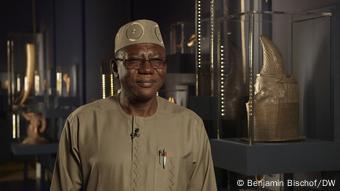
Abba Isa Tijani, director of Nigeria's National Commission of Museums and Monuments: 'Partnership is key'
Joint exhibitions with museums around the world are also planned. Tijani aims to focus on partnerships with museums as global institutions. "We don't want it to be just a return," he said.
The Nigerian commission is seeking to involve the large African diaspora in Europe: "When these objects go back to Nigeria, we are talking about a period of over 100 years that these objects have been outside the country," said Tijani. He believes that it is important to keep telling the stories of the journey of these objects, and of the communities and countries where they spent the past century.
Not only Germany is beginning to restitute cultural assets from colonial times. Most recently, the Glasgow Museum in Scotland returned 19 artifacts to Nigeria. The Smithsonian in the United States has restituted 29 pieces, and the National Gallery of Art in Washington has also agreed to repatriate objects from its collections.
This article was originally written in German.
Not all Benin Bronzes will return to Nigeria; some will remain in Germany on loan.

Abba Isa Tijani, director of Nigeria's National Commission of Museums and Monuments: 'Partnership is key'
Joint exhibitions with museums around the world are also planned. Tijani aims to focus on partnerships with museums as global institutions. "We don't want it to be just a return," he said.
The Nigerian commission is seeking to involve the large African diaspora in Europe: "When these objects go back to Nigeria, we are talking about a period of over 100 years that these objects have been outside the country," said Tijani. He believes that it is important to keep telling the stories of the journey of these objects, and of the communities and countries where they spent the past century.
Not only Germany is beginning to restitute cultural assets from colonial times. Most recently, the Glasgow Museum in Scotland returned 19 artifacts to Nigeria. The Smithsonian in the United States has restituted 29 pieces, and the National Gallery of Art in Washington has also agreed to repatriate objects from its collections.
This article was originally written in German.
